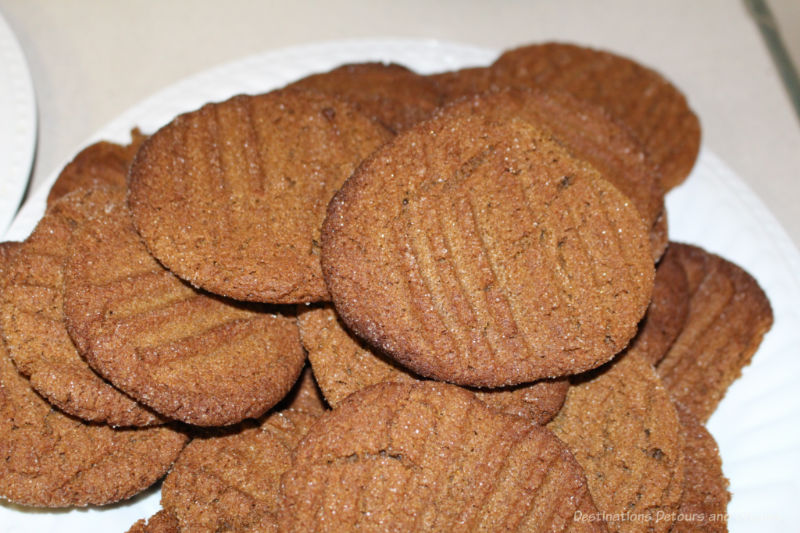Cooking With Mesquite

A lesson on mesquite flour from a demonstration at Prickly Pear and Mesquite Festival Superstition Mountain Museum
This post has been replaced with Cooking With Prickly Pear And Mesquite In Arizona.

This post has been replaced with Cooking With Prickly Pear And Mesquite In Arizona.
This site uses Akismet to reduce spam. Learn how your comment data is processed.
Subscribe now to keep reading and get access to the full archive.
I didn’t even know that there was such a thing! I used to sell a commercial slow cooker where our chefs experimented with mesuqite wood all the time…but the flour is a really cool idea!
Apparently, indigenous American Indians relied on mesquite pods as a food source and made flour from it. But I didn’t know anything about mesquite flour until I attended Jean’s class.
Oh my goodness – I had no idea you could cook with it!
I find it interesting to learn about the various plants the indigenous peoples cooked with – many I never realized you could use as a food source.
Well, I learned something new today too. I hadn’t heard of mesquite flour before. That is interesting. I’m sure it would make gingersnaps extra good.
The gingersnaps were good. I used the recipe that came with the flour. One day I will make my family recipe for ginger cookies and substitute some of the flour with mesquite flour and see how those turn out.
I’ve never come across mesquite before – I’ll have to look out for it if I’m ever in that part of the US.
You won’t find mesquite flour in regular grocery stores. You need to find a specialty store that stocks it or look for it at farmers’ markets or vendor tents at festivals.
Really interesting! I had no idea a person could cook with mesquite flour but it definitely sounds worth watching for.
I wasn’t sure what it would be like to cook with. I was prepared for the possibility we might not like and I’d be throwing out the rest of the bag after one or two tries. But I had to try it and I was pleasantly surprised.
Like you, all I knew about mesquite, which grows all over South Texas, was that it added a fabulous flavor to barbecue. The mesquite gingersnaps sound delicious and just in time for the holiday season! Thanks for sharing this interesting information.
It’s likely you can find specialty stores or artisans in your area selling mesquite flour.
Hi Donna. What a fun class to take. I had never heard of mesquite flour. I love cinnamon, so I know that this would be a flour I could get used to .
I didn’t detect the taste in cinnamon in the flour myself, although I did find it subtly spicy. It adds a nice flavour to anything I tried it on so far.
I remember back aways, when it became trendy to barbecue with the wood, but your information about mesquite flour is news to me.
It was news to me too. I thought it might have too strong or strange a taste, but am finding it to be quite pleasant.
Not only have I never cooked with it but never heard of it until your informative post!
Many people who live where mesquite trees grow have never heard of mesquite flour.
Like you Donna, I only knew of smoking with mesquite. You’ve certainly piqued my interest. I would think the flavor would be stronger in the flour, but it sounds like it imparts a lovely taste. Thanks for all the great information.
I too thought the flavour might be quite strong, but it turned out to be more subtle than I expected.
Thanks Donna. I really like the sound of Mesquite. What a great way of reducing gluten intake by substituting 30 percent of the recipe’s regular flour with Mesquite flour. The cookies look yummy.
The cookies were delicious.
Mesquite is really good for grilling. I use it on my grilled steak.I never thought you can try it with cookies. Nice flour you got there!
Until I saw this demonstration, the only connection I knew of between mesquite and cooking was the use of the wood for grilling. I didn’t know the pods could be used for flour.